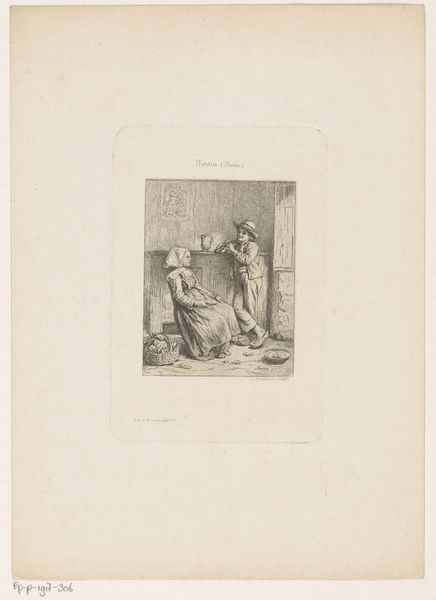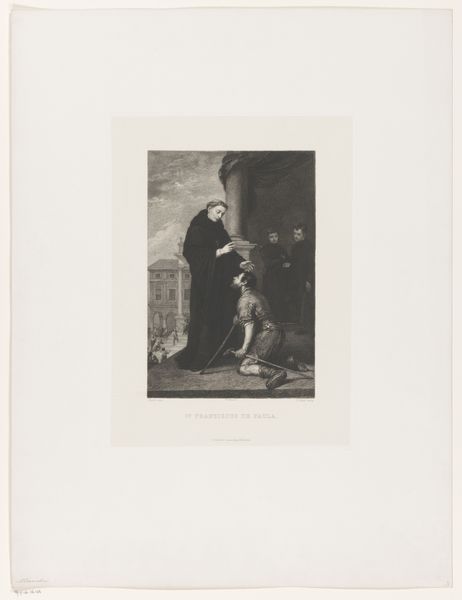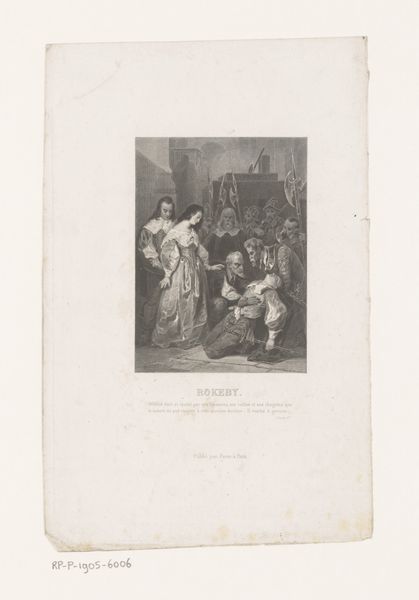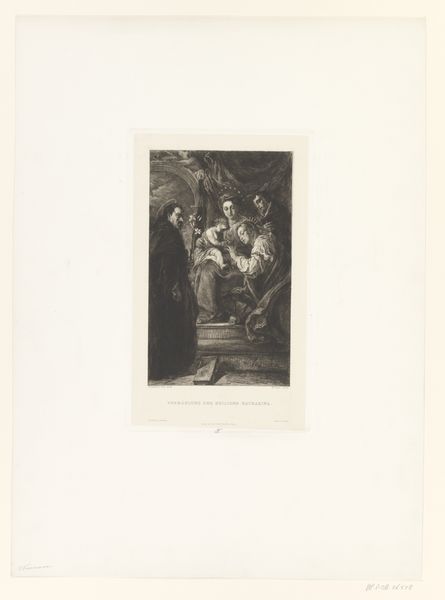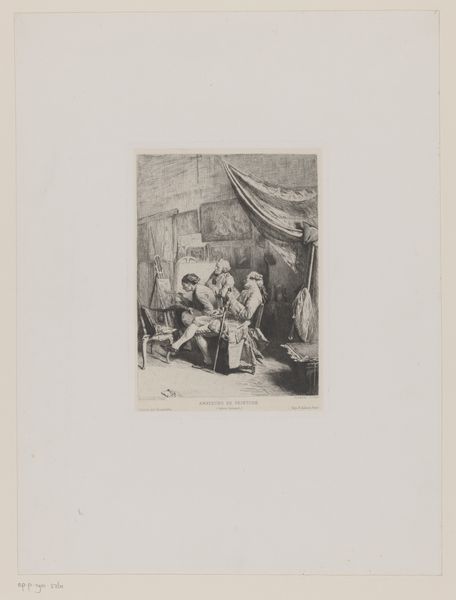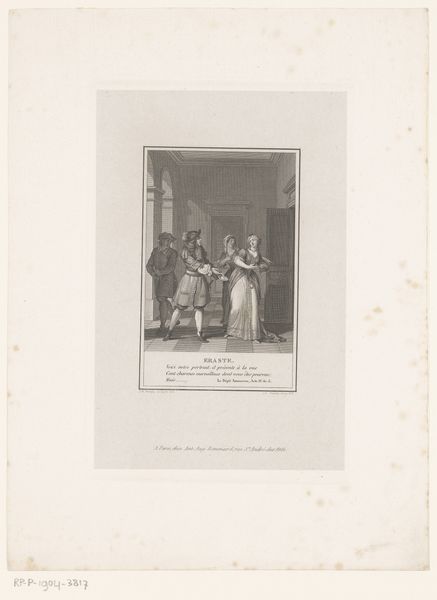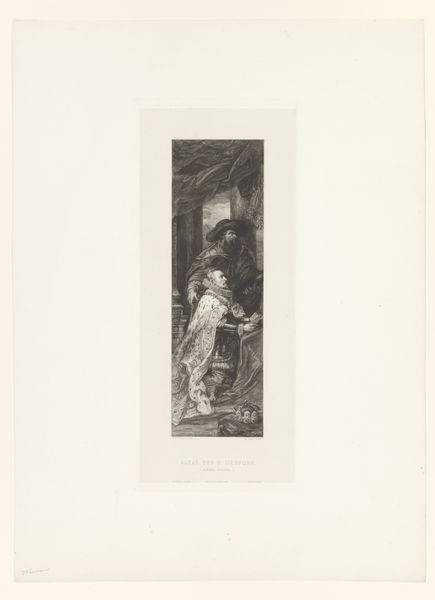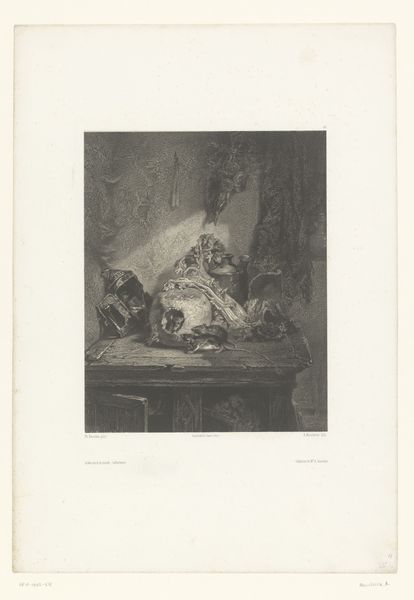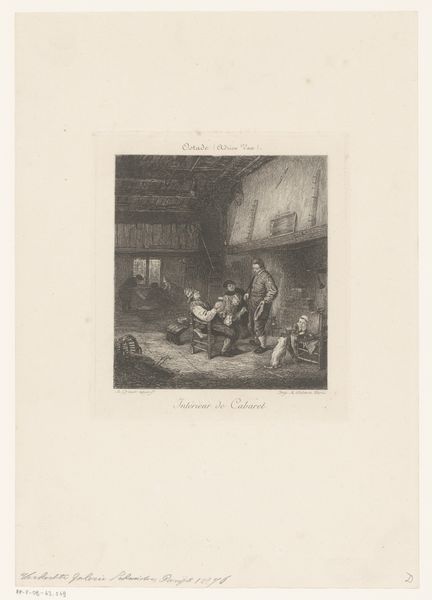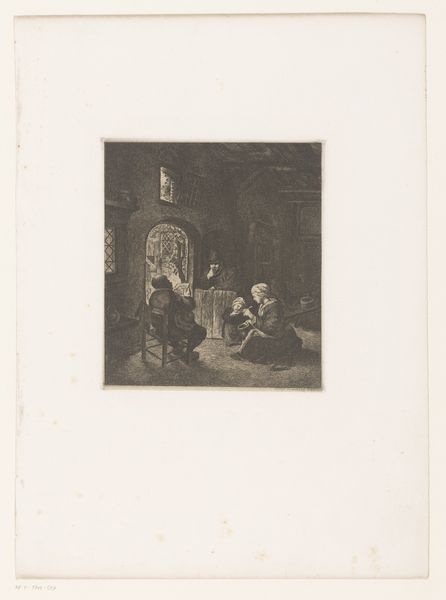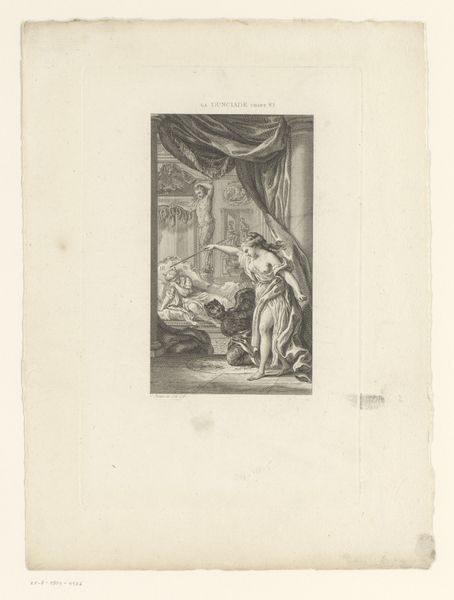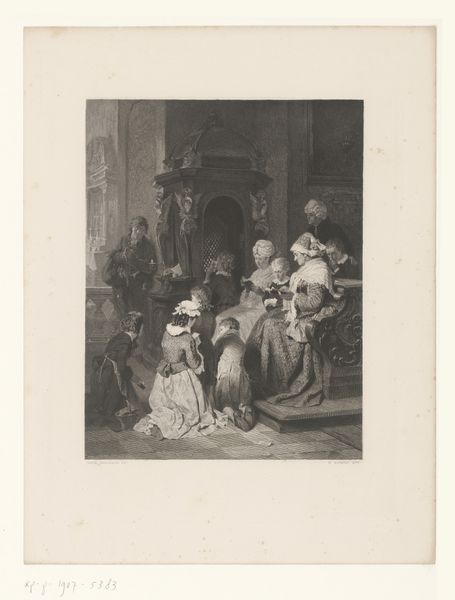
drawing, print, etching, paper
#
portrait
#
photo of handprinted image
#
drawing
#
narrative-art
#
ink paper printed
# print
#
etching
#
paper
#
genre-painting
#
realism
Dimensions: height 385 mm, width 292 mm
Copyright: Rijks Museum: Open Domain
Curator: Immediately, I notice the delicate use of light and shadow to create such a somber atmosphere. Editor: We're looking at "Dokter voelt polsslag van zieke vrouw," or "Doctor Feeling the Pulse of a Sick Woman," an etching dating from the mid-19th century, placing it amidst significant changes in medical practice. It's attributed to Johann Leonhard Raab. Curator: Yes, you can almost feel the weight of illness in the room. The pale figure of the woman contrasted with the dark clothing of the doctor… and what's that behind her, another attendant? It evokes a sense of helplessness. Is she a patient in her home or perhaps an almshouse? Editor: The setting, the intimate domestic scene, points towards the former. Physicians at that time largely practiced within the community. Taking a longer view, scenes like this marked a turning point, elevating the doctor to an almost saintly figure – the bringer of scientific knowledge. But what symbols do you notice at play in the work itself? Curator: I’m struck by how the window light seems to pour over the sick woman, emphasizing her pallor but also, perhaps, alluding to hope. Notice the animals - they create such a juxtaposition with illness, and almost an earthly reminder of life and vibrancy just outside of this moment. Is it fair to interpret this interplay between shadow and illumination as the contest between medical understanding and the mysteries of life? Editor: Certainly, it emphasizes the fragility of human existence, especially poignant given the lack of medical knowledge at the time. Also consider how the printed medium influences perceptions – etchings and prints allowed for broader dissemination of such imagery, impacting wider audiences and cultivating evolving notions about illness, care and doctors. Curator: That's so true, prints like this one really shaped the public understanding of complex and sensitive topics, offering insights into everyday life while subtly nudging opinion about how we perceive professions. It really makes me appreciate the cultural influence these visual representations must have had. Editor: Absolutely, seeing how images circulate can reveal such fundamental perspectives toward historical events, medical treatments, class dynamics, and the whole evolution of how we perceive ourselves in society.
Comments
No comments
Be the first to comment and join the conversation on the ultimate creative platform.
